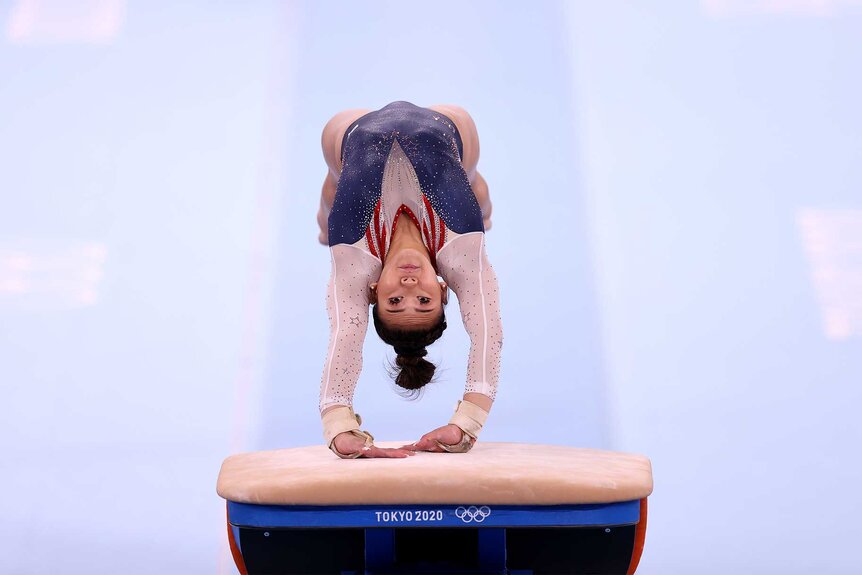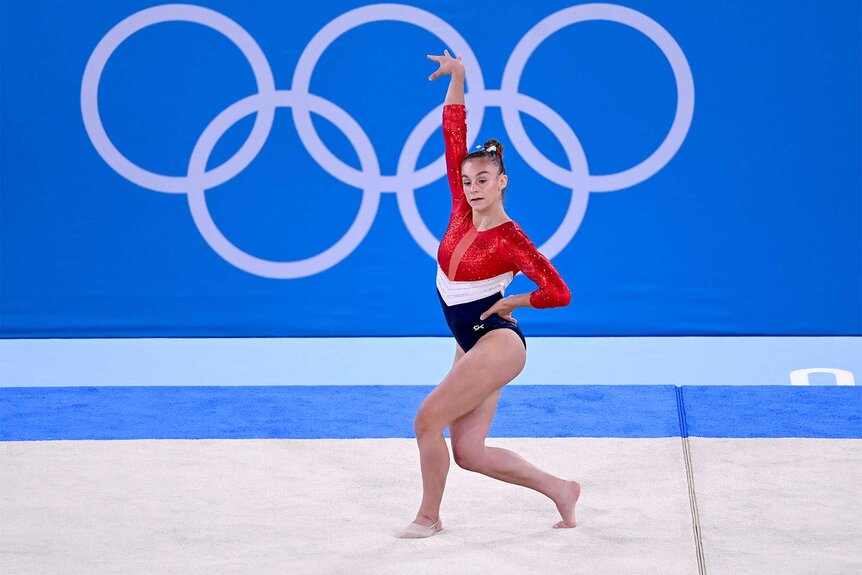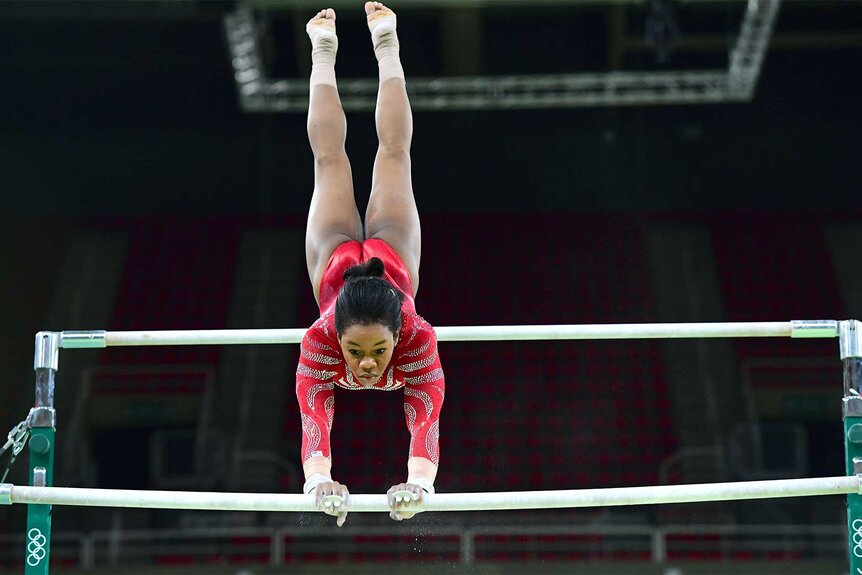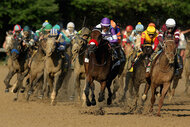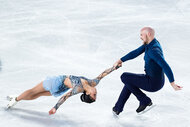Everything to Know About Women’s Artistic Gymnastics
America’s crown jewel of Olympic sports breaks down into five categories.
When the 2024 Olympic Games kick off in Paris, France this summer, Team USA’s brightest stars will be out in full force early on in the tournament with the women’s gymnastics qualification set to soar Sunday, July 28 — and we do mean soar! Though they must first make the cut at the Olympic Trials in Minnesota, this year’s potential Olympic squad from the United States has long been speculated to feature perhaps the most talented group of athletes ever before assembled under the Stars and Stripes.
And with that comes an immense pressure to achieve what seems almost preordained. From the powerhouses of Suni Lee, Gabby Douglas and Simone Biles to the skilled newcomers like Shilese Jones, gold medals aren’t just desired, they’re expected. But hardware aside, the 10-day artistic category in France’s fabled City of Light offers others like Biles something more: a shot at redemption. Biles was forced to withdraw during the Tokyo Games, due to what’s known as the “Twisties,” which is when a gymnast develops a mental block that causes a disconnect between the athlete and a specific skill, such as a complex aerial maneuver. It's highly disorienting and, like all mental blocks in sports, it has the unfortunate power to ruin careers in an instant.
RELATED: Olympian Mary Lou Retton Gives an Update on Her Battle with Rare Form of Pneumonia
But for podium bows or other goals to materialize with the Hollywood endings we crave, the women of Team USA gymnastics will battle the most elite gymnasts from across the globe in a myriad of different categories, seeking not just victories, but also to assert their dominance in an impressive field. Here’s a look at the categories they’ve a lifetime perfecting over their career to ensure that a dream becomes a reality.
Balance Beam
Measuring 16.4 feet long, the apparatus used in this event is four feet off the ground and just four inches wide. That doesn’t sound very formidable of a challenge, but when you add in a couple powerful flips, it clear why it’s viewed as the most intimidating of the four apparatus-based events. With minimal padding, it’s firm to the touch and possesses enough spring to help beam experts like Shawn Johnson execute death-defying, aerial maneuvers like she did when she won the gold medal at the 2008 Summer Games in Beijing, China. Other focus areas for gymnasts besides acrobatic theatrics on the beam come in the form of leaps, jumps, holds, turns, and handstands. No matter the structure of a routine, the goal within the 90-second timeframe is to pack in as many complex moves as possible to showcase as dynamic of a repertoire as possible. Significant dedication to enhancing core strength along with attention to detail are instrumental in developing a successful routine.
Vault
In addition to the floor exercise, the vault exercise is the only other event in the coveted artistic gymnastics category that both men and women perform, and if you’ve ever been fortunate enough to witness it in person, you know why. Aimed toward a target of ultimate precision, it’s an explosion of energy, one that only lasts a blink of the eye, but whose glory has the lasting ability to forever reverberate through the history books.
After her debacle at the 2020 Tokyo Games with the “twisties,” Simone Biles returned to competition in Antwerp, Belgium during the 2023 World Artistic Gymnastic Championship and literally rewrote the history books when it came to the beam. She landed the Yurchenko double pike, whose 6.4-point assessment made it the most difficult move in the women’s scoring code, according to NBC News. The incredible feat earned her the honor of having the name of the vault move changed to the Biles II.
RELATED: Find Out Which New Sports Will Debut at the 2024 Paris Olympics
Floor Exercise
Held first for women during the 1952 Olympics, no other apparatus is used in the floor exercise other than the mat itself, which measures approximately 12 meters by 12 meters for a total of 39.37 square feet. There is a white border that is roughly 2 inches wide. This is called the delimitation strip, and if a gymnast moves beyond that area, a point deduction will be made.
Lasting no longer than 90 seconds, the floor routines are creatively paired with music to help elevate the gymnast’s abilities in the realms of dance, tumbling, and acrobatic movements. While tempo and mood of routines may vastly differ from one gymnast to another, typically, there’s enough time for an athlete to execute four passes, meeting the requisite of two acrobatic series and a dance series. At least one acrobatic series must feature two or more “saltos,” which could be front or backflips, and the dance series must have two distinct elements.
Uneven Bars
Constructed out of fiberglass and a birch wood laminate, the two bars are parallel to each other but, as the name implies, they stand at different heights. The height of the low bar clocks in at five feet, five inches, and that of the high bar sits at eight feet off the floor. Each measures seven feet, 10 inches long with a diameter of 1.5 inches. In this event, gymnasts must execute a complex series of maneuvers, flying from bar to bar as they incorporate grip changes, turns, spins, and aerial rotations in a routine that usually lasts between 30 and 45 seconds. The eight most difficult skills, including the dismount, combine to form the difficulty score.
RELATED: Everything to Know About the 2024 Paris Olympic Village
Individual All-Around
The individual all-around final is formed from the top 24 gymnasts, who tallied the highest total individual scores to advance from qualifying. Split into four groups of six, only two gymnasts from any one country may advance to the final. According to NBC, it’s rather common for programs like Team USA women’s gymnastics to be forced to leave other athletes out from going to the final despite having the marks to warrant an entry.
At the start of the final, scores have reset, and each athlete is given one opportunity to execute one routine per each of the four apparatuses (balance beam, vault, floor ,and the uneven bars). Upon the culmination of each specialty, the athletes’ scores are added up, and the athlete with the highest cumulative score is crowned the all-around champion.























